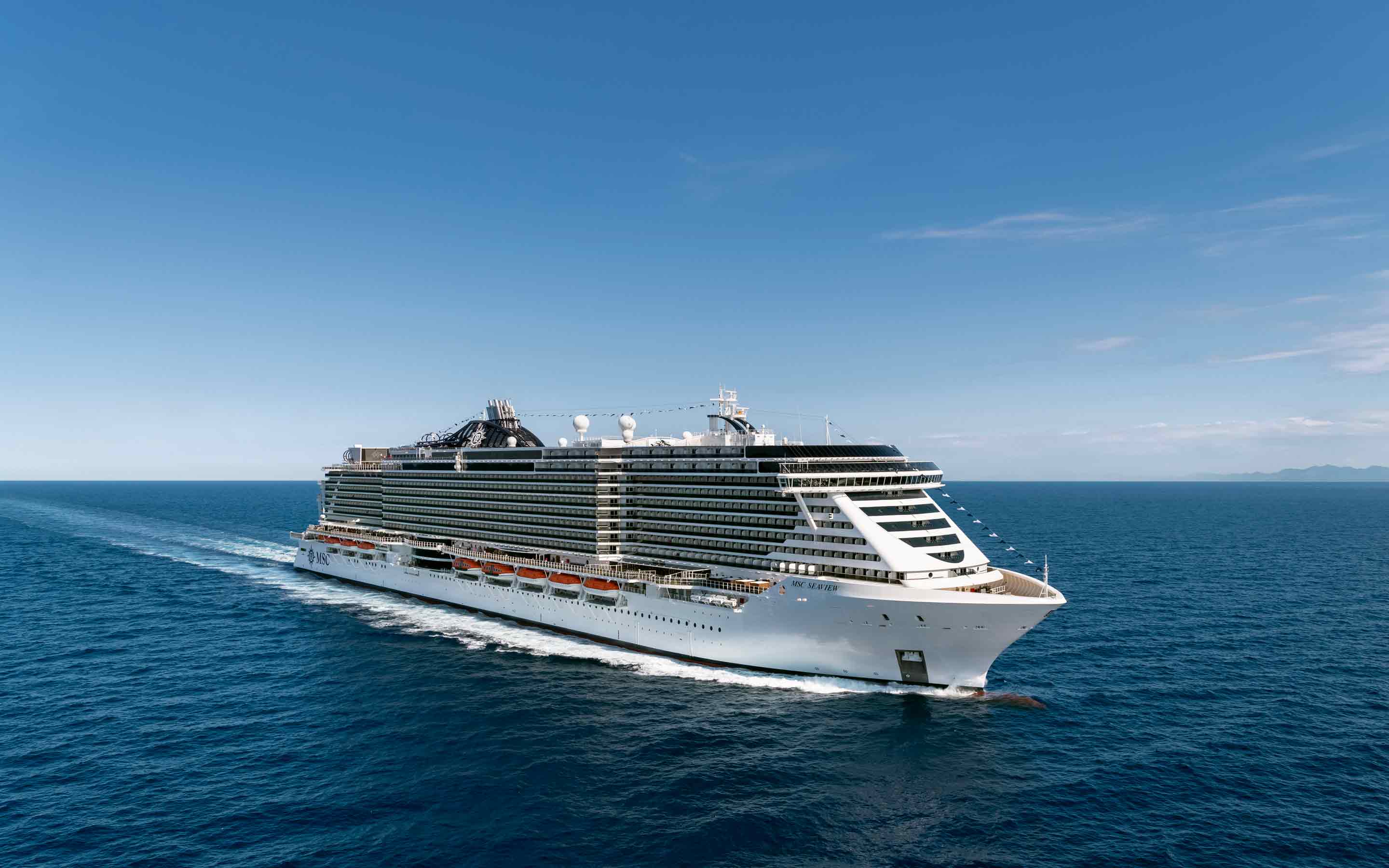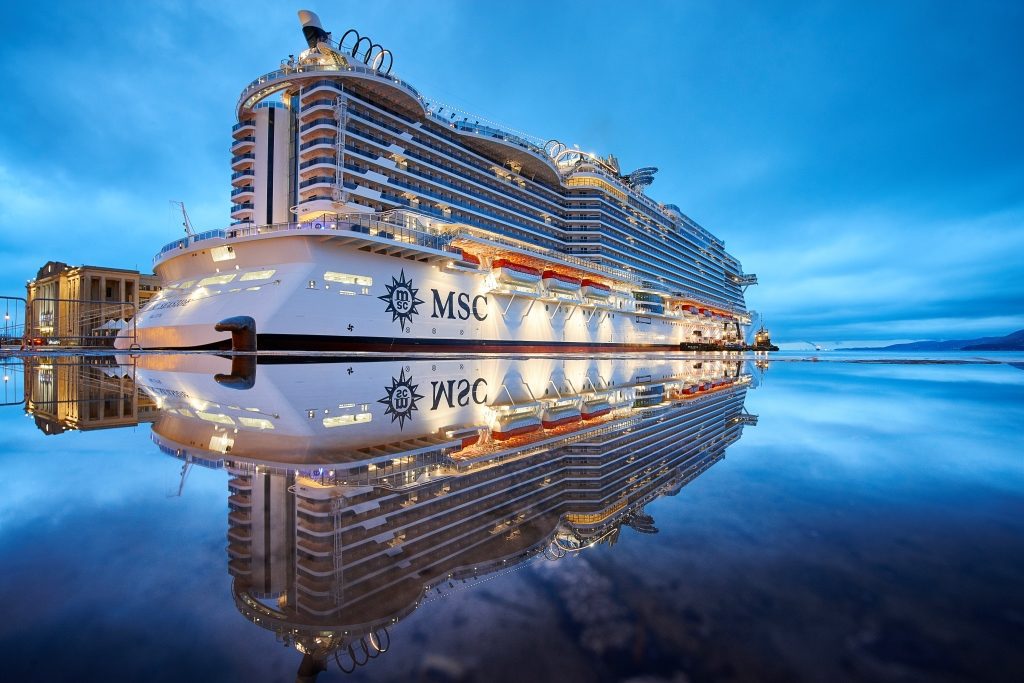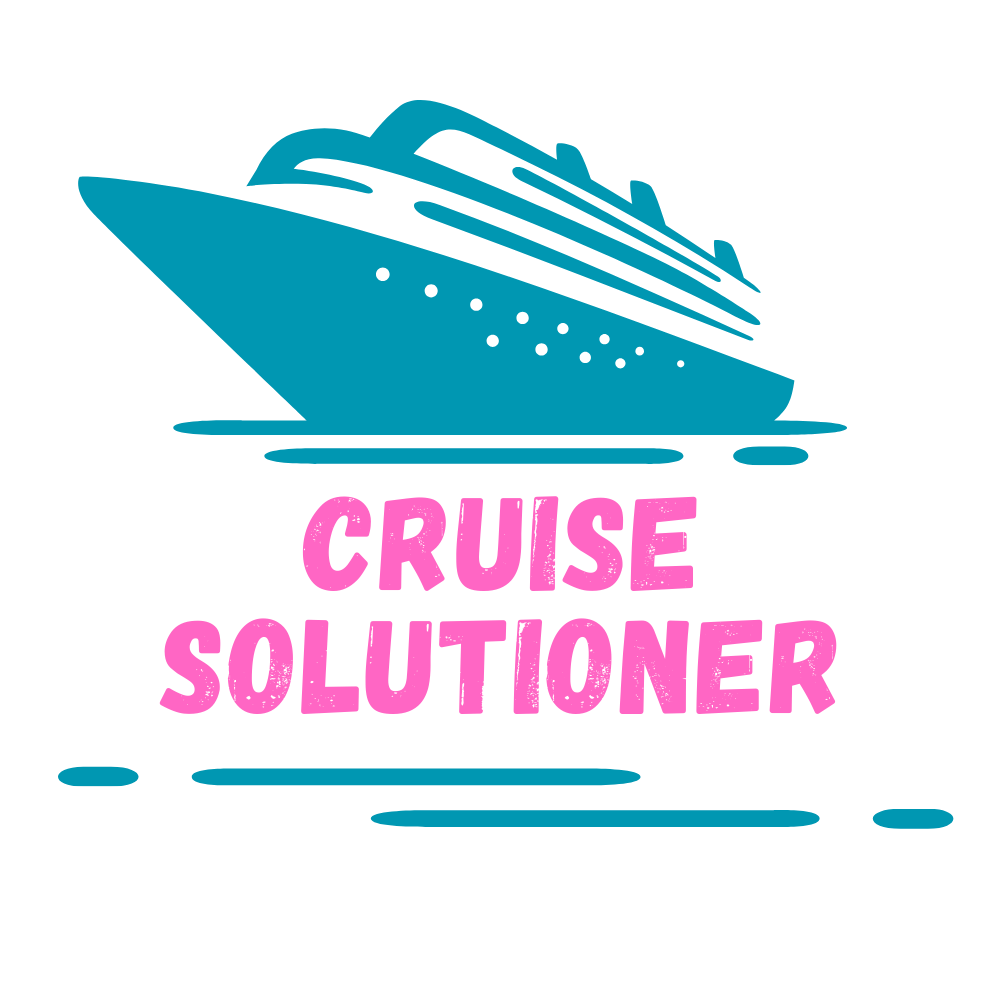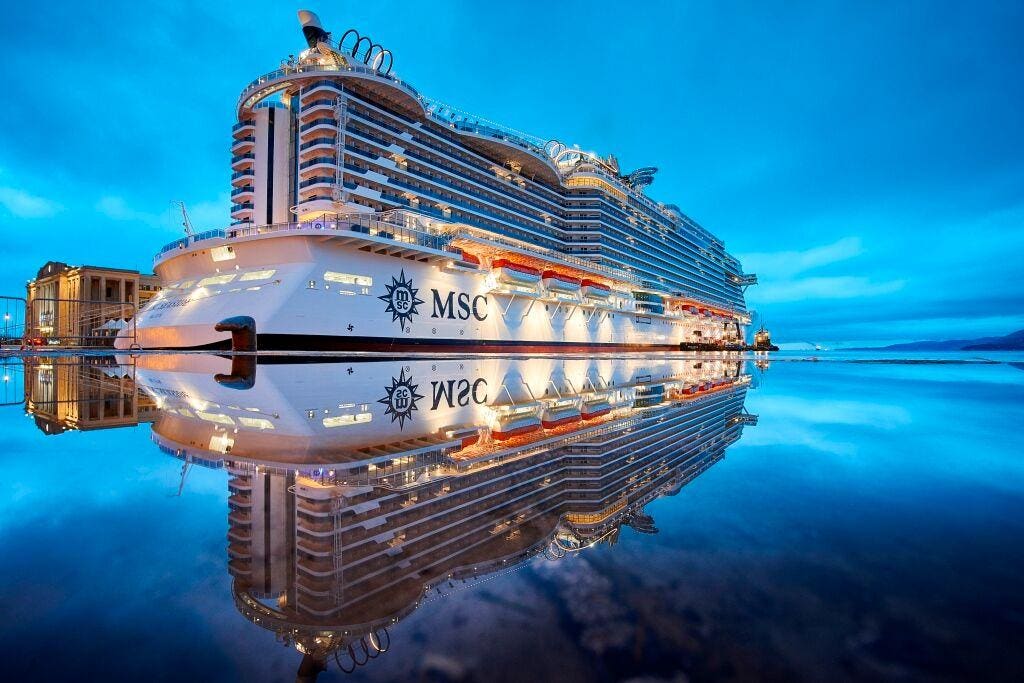MSC Cruises is a well-known cruise line. It offers amazing travel experiences. But how long has MSC Cruises been in business? Let’s dive into its history and see.
How Long Has MSC Cruises Been in Business? The Journey of MSC Cruises
MSC Cruises is a well-known cruise line. It offers amazing travel experiences. But how long has MSC Cruises been in business? Let’s dive into its history and see.
The Beginning of MSC Cruises
MSC Cruises‘ story begins in 1970 when Gianluigi Aponte founded the Mediterranean Shipping Company (MSC) in Brussels. Initially a family-run shipping business, Aponte‘s vision was to redefine maritime transport with innovative routes and larger cargo ships. This venture laid the groundwork for MSC‘s entry into the cruise market.
MSC Cruises started in 1988. It began with just one ship. The company was founded by Gianluigi Aponte. He had a vision to create a unique cruise experience. His dream became reality with the first ship, MSC Symphony.
In the same year, MSC made a bold move into the cruise market by acquiring two liners from Lauro Lines. One of these ships was renamed MSC-Starlauro, while the other retained its iconic name, Achille Lauro. This acquisition was a pivotal moment, marking the start of a new era for MSC in the cruise industry.
A year later, MSC further solidified its position by purchasing Lauro Lines, showcasing its commitment to becoming a dominant force in the cruise world.
The Evolution of MSC Cruises: From Modest Beginnings
When you trace the roots of MSC Cruises, you’ll find a fascinating journey that begins within the close-knit Aponte family. Initially, they were deeply involved in maritime trade, a realm they knew well thanks to years of experience in the shipping industry.
1970: A New Venture Begins
In 1970, Gianluigi Aponte, driven by his passion and expertise, took a significant leap by founding the Mediterranean Shipping Company (MSC) in Brussels. With an ambition to innovate, he aspired to forge new shipping routes and utilize larger cargo vessels than were commonly used at the time.
Key Milestones:
- First Acquisition: The first pivotal move was the purchase of a cargo ship named Patricia. This helped establish MSC‘s footprint in international waters.
- Fleet Expansion: Shortly after, Aponte added a second ship, Rafaela, named in honor of his wife. This expansion allowed the company to initiate a new trade route connecting Somalia with the Mediterranean.
Transition to Cruising
In 1988, MSC made its bold move into the cruise industry by purchasing two liners from Lauro Lines, marking the birth of MSC Cruises. This acquisition was pivotal, allowing MSC to harness its shipping expertise and enter a new era of passenger travel with its first ship, MSC Symphony.
From Shipping to Cruising
MSC‘s journey from a shipping powerhouse to a leading cruise line is a testament to vision and adaptability. With a foundation built on maritime expertise and strategic innovation, the Aponte family gradually transitioned into the world of luxury cruising, evolving into one of the industry’s top contenders today.
In this transformation, MSC Cruises has managed to retain the family-run essence while embracing a global identity—offering travelers unique experiences that marry traditional values with modern luxury.
This origin story showcases how a family’s dedication and strategic vision can grow from small beginnings into a globally recognized leader in the cruise industry.
Early Years And Expansion
The early years were about growth. MSC Cruises expanded its fleet. They added more ships to their collection. By the mid-1990s, MSC Cruises had five ships. They were becoming known for their excellent service and fun activities.
Key Milestones in the 1990s
- 1995: MSC Cruises launched MSC Melody.
- 1997: MSC Rhapsody joined the fleet.
- 1998: MSC Symphony was upgraded.
Entering the 21st Century
The 2000s were a big decade for MSC Cruises. They introduced new ships. Their fleet grew larger. They also started offering more destinations. This made them a popular choice for travelers.
Significant Ships And Innovations
During the 2000s, MSC Cruises launched several new ships. Each ship had modern features. They offered luxury and comfort. Here are some key ships from this era:
- MSC Lirica: Launched in 2003. In the same year, Pierfrancesco Vago took the helm of MSC Cruises, marking a pivotal moment for the company. Under his leadership, a bold €5.5 billion investment program was initiated to construct the world’s most modern cruise fleet.
- This ambitious endeavor began with the commissioning of Les Chantiers de L’Atlantique, a prestigious shipbuilder, setting the stage for a fleet transformation. The MSC Lirica was the first fruit of this vision, designed to accommodate 1,445 passengers and 721 crew members, showcasing a new era of luxury and innovation on the seas.
- The launch of MSC Lirica was not just the debut of a ship; it signaled the start of a new chapter for MSC Cruises, followed closely by the introduction of her sister ship, MSC Opera, in 2004. This expansion was a testament to the company’s commitment to growth and excellence in the cruise industry.
- MSC Opera: Launched in 2004.
- MSC Musica: Launched in 2006.
Innovations and New Features
MSC Cruises introduced many new features. They added luxurious cabins. They offered more dining options. Entertainment on board also improved. This made the cruises more enjoyable for guests.
The Renaissance expansion program was a strategic initiative launched by MSC Cruises to significantly enhance and grow its fleet. Kickstarted shortly after its conception, the ambitious plan involved a considerable investment of €200 million spread over a decade. This financial commitment aimed at introducing 13 new ships to the fleet, marking a major expansion phase.
The program began its rollout with the launch of the MSC Meraviglia, setting the stage for the arrival of additional vessels. Beyond just adding new ships, the program also focused on upgrading existing liners.
2014 – 2015 Renaissance Programme Details
As part of this enhancement effort, the Renaissance Programme undertook significant upgrades to the existing fleet, specifically targeting the Lirica Class ships:
- Ships Involved: MSC Lirica, MSC Opera, MSC Armonia, and MSC Sinfonia.
- Physical Modifications: Each ship was extended by 24 meters and increased by 2,200 gross tonnes.
- Cabin Expansion: The upgrades allowed for an additional 87 passenger cabins, including 60 balcony cabins, enhancing the onboard experience.
The timeline for these upgrades was as follows:
- MSC Armonia – Returned to service in November 2014.
- MSC Sinfonia – Completed its enhancements by April 2015.
- MSC Opera – Finalized upgrades in July 2015.
- MSC Lirica – Rejoined the fleet in November 2015.
Overall, the Renaissance expansion was a multifaceted approach to modernizing and enlarging the cruise line’s offerings, promising advanced amenities and a broader range of travel options for passengers. By focusing both on new additions and significant updates to existing ships, MSC Cruises demonstrated a commitment to enhancing passenger experiences and expanding its global reach.
Ambitious Investment and Expansion
In 2003, MSC Cruises embarked on an ambitious €5.5 billion investment program. This investment aimed to develop the world’s most modern cruise fleet, setting a target to reach a 12-ship fleet within 10 years—a plan unrivaled by competitors at the time.
Strategic Partnerships and New Builds
A significant part of this investment was commissioning Les Chantiers de L’Atlantique, one of the world’s largest shipyards located in Saint Nazaire, France, for new builds. This partnership led to the creation of new MSC class liners, including the Musica Class and Fantasia Class.
Fleet Expansion through Acquisitions
In early 2004, MSC Cruises expanded its fleet by purchasing MSC Sinfonia and MSC Armonia, both Lirica Class ships, from Festival Cruises, following the latter’s bankruptcy. This strategic acquisition further strengthened their Mediterranean presence.
Growing Global Presence
By the end of 2004, MSC Cruises was operating eight cruise ships, navigating waters in the Mediterranean, Northern Europe, South America, and South Africa. This expansion not only increased their market presence but also diversified their offerings for travelers seeking global adventures.
MSC Cruises in the 2010s
The 2010s were even more exciting. MSC Cruises continued to grow. They launched the MSC Yacht Club. This provided a private club experience on their ships. They also expanded their destinations further.
By 2009, MSC Cruises achieved remarkable growth and stability in the cruise market through strategic initiatives and customer engagement. They successfully welcomed over a million guests aboard their expansive fleet, marking a significant milestone in their journey.
Key Strategies for Growth and Stability:
- Fleet Expansion: MSC invested heavily in expanding their fleet, which allowed them to offer a greater variety of destinations and itineraries. This expansion not only attracted new customers but also encouraged repeat bookings.
- Customer Experience: Prioritizing the customer experience was central to their strategy. By providing exceptional service and diverse onboard experiences, they fostered brand loyalty and word-of-mouth referrals.
- Market Positioning: MSC effectively positioned themselves in the market as a reliable and innovative option, which appealed to a broad demographic. Their clear brand identity helped distinguish them from competitors.
- Sustainability Initiatives: In response to growing environmental concerns, the company implemented sustainability measures, which enhanced their brand appeal and stability throughout turbulent market changes.
Through these strategies, MSC Cruises not only demonstrated stability but also hinted at further expansion, poised to capture even more of the cruising public in the years ahead.
New Additions To The Fleet
During this decade, MSC Cruises added many ships. Some of the notable ones are:
- MSC Splendida: Launched in 2009.
- MSC Divina: Launched in 2012.
- MSC Seaside: Launched in 2017.
The Significance of MSC Cruises in MSC Cruises‘ Expansion
The launch of the MSC Preziosa in 2013 marked a pivotal moment in MSC Cruises‘ decade-long expansion strategy. This vessel’s introduction wasn’t just about adding another ship to the fleet; it symbolized the culmination of a meticulously planned growth endeavor.
Key Highlights:
- Completion of Expansion Goals: The MSC Preziosa was the final piece in a bold vision to expand and enhance the cruise line’s offerings within a ten-year timeframe.
- Enhanced Capabilities: With its state-of-the-art features, the ship elevated the company’s ability to provide exceptional experiences to passengers, setting a new standard in the cruise industry.
- Strategic Growth: Its arrival solidified MSC Cruises‘ position as a formidable player in the market, demonstrating the successful execution of their long-term growth plans.
In essence, the MSC Preziosa wasn’t merely another ship; it represented the fulfillment of an ambitious expansion blueprint, highlighting the cruise line’s commitment to innovation and excellence.
Focus on Sustainability
MSC Cruises also focused on sustainability. They introduced eco-friendly ships. They reduced their environmental impact. This made them a leader in green cruising.
MSC Cruises has significantly expanded its footprint into new markets, particularly the US and Caribbean regions. By 2019, the cruise line reached an impressive milestone, serving 2.7 million passengers from 185 different nationalities globally.
Expansion into the US Market
The company’s strategic focus on the US market has been evident through the introduction of new and exciting travel routes catering to American travelers. Initially, MSC faced challenges when they entered the North American market in 2013 with the deployment of the MSC Divina out of Miami. The company realized that the US market required a tailored approach, different from their European strategy. They made numerous adjustments, particularly in entertainment and cuisine, to better align with American tastes and preferences. These changes ultimately led to success, highlighting MSC’s adaptability and commitment to understanding regional market dynamics.
Caribbean Adventures
Moreover, MSC has made remarkable strides in the Caribbean by launching exclusive destinations. A notable achievement is the development of a private island, Ocean Cay MSC Marine Reserve, in the Bahamas. This unique destination enhances the allure of their Caribbean voyages, offering passengers a blend of natural beauty and luxury services.
The Ocean Cay MSC Marine Reserve Project
In 2019, MSC launched the Ocean Cay MSC Marine Reserve, marking a significant expansion in their offerings. This project transforms a former industrial site into a thriving marine reserve, reflecting a commitment to environmental sustainability and guest satisfaction.
- Launch Year: 2019
- Location: Bahamas
- Features: Natural beauty, luxury services, and ecological preservation
By introducing this exclusive experience, MSC continues to set new standards in cruise travel, providing guests with an opportunity to explore a pristine paradise while enjoying world-class amenities.
These efforts illustrate MSC Cruises‘ commitment to diversifying and expanding its global presence, tailoring experiences that captivate a wide range of international travelers. Through strategic adjustments and innovative offerings, MSC continues to elevate the cruising experience for a broader audience.
How Did MSC Cruises Contribute to Conservation and Humanitarian Efforts through the MSC Foundation?
In 2018, MSC Cruises made a significant stride in promoting environmental and humanitarian goals by establishing the MSC Foundation. This independent, not-for-profit initiative plays a pivotal role in realizing the company’s ambitious commitments towards safeguarding natural ecosystems and improving human welfare.
Conservation Efforts:
- Marine and Coastal Preservation: The foundation focuses heavily on marine life conservation, partnering with leading environmental organizations to protect vulnerable marine habitats and species.
- Sustainability Initiatives: By funding projects that promote sustainable practices, the foundation aims to minimize the environmental footprint of maritime activities.
Humanitarian Contributions:
- Disaster Relief and Recovery: The organization responds to crises worldwide, providing essential aid and resources in the aftermath of natural disasters.
- Community Development: Efforts to support community growth include educational programs and infrastructure projects designed to enhance the quality of life for underserved populations.
Through these focused initiatives, MSC Cruises, via the MSC Foundation, makes a meaningful impact on the environment and society, demonstrating an ongoing commitment to conservation and humanitarian missions.

MSC Cruises Today
Today, MSC Cruises is one of the largest cruise lines. They have a fleet of 18 ships. They offer cruises to over 200 destinations. Their ships are known for luxury and comfort.
Commitment To Excellence
MSC Cruises continues to offer excellent service. They focus on customer satisfaction. Their ships have modern amenities. They provide a memorable experience for all guests.
Future Plans
MSC Cruises is always looking ahead. They plan to launch new ships. They aim to expand their destinations. They are committed to providing the best cruise experiences.
In an exciting development, MSC Cruises is stepping into the luxury cruise travel industry. This bold move includes the launch of four Explora Journeys ships, set to debut over the next few years. These luxurious vessels will mark a significant expansion of their offerings, showcasing their dedication to providing unparalleled travel experiences.
By targeting the luxury market, MSC Cruises aims to redefine opulence at sea, ensuring that every journey is not just a trip, but a memorable adventure. With these new ships, they plan to reach new heights and explore more exotic destinations, all while maintaining their commitment to exceptional service and innovation.
MSC Cruises operates a diverse fleet with ships sailing under two main flags. The Lirica, Musica, and Fantasia Class ships proudly fly the flag of Panama. Meanwhile, the Meraviglia, Meraviglia Plus, and Seaside Classes are distinguished by the Maltese flag. This blend of international flags highlights the global nature of the cruise line’s operations.

The Evolution of MSC Cruises: From Humble Beginnings to Global Prowess
MSC Cruises has navigated through decades of growth and transformation, evolving from modest beginnings to becoming a formidable force in the cruising industry.
The Genesis: Expanding Horizons
Originating in Naples, Italy, MSC Cruises is deeply rooted in the broader MSC Group, renowned for its global shipping operations. The journey began in 1988 with the acquisition of the liner Monterey, marking MSC’s foray into the passenger shipping arena. This was quickly followed by the acquisition of Lauro Cruise Line, a small operation previously running the Achille Lauro. The merged entity was briefly known as StarLauro Cruises.
However, a setback came in 1994 when the Achille Lauro tragically sank. This prompted a rebranding and restructuring phase.
Formation and Growth: Building a Fleet
The tides shifted in 1995 when MSC Cruises was officially established, drawing upon the expertise and resources of MSC Cargo. The same year, MSC expanded its fleet with the addition of the Cunard Princess, renamed as MSC Rhapsody, and the MSC Symphony. By 1997, the fleet had grown to include the MSC Melody, bringing the total count to four ships.
Modernization Era: Strategic Investments Underpin Growth
A significant turning point arrived in 2003 with Pierfrancesco Vago’s leadership and a bold €5.5 billion investment plan. This strategic initiative aimed at constructing a state-of-the-art cruise fleet, bringing MSC Cruises into a new era of modernity. The company’s first new build, MSC Lirica, debuted this phase, followed by several sister ships, solidifying its Mediterranean and global presence.
The fleet’s expansion continued with the introduction of the Musica Class ships, starting with MSC Musica in 2007. These vessels, offering enhanced amenities like more balconies and suites, heralded further growth. Highlights of this period included the launch of the MSC Orchestra, MSC Poesia, and MSC Magnifica, solidifying MSC Cruises’ reputation for luxury and innovation.
Expansion into New Markets: Conquering Challenges and Triumphs
In parallel with fleet expansion, MSC introduced the Fantasia Class, accommodating even more passengers with ships like MSC Fantasia and MSC Splendida. The crowning glory of this class included MSC Divina and MSC Preziosa.
In 2013, MSC Cruises made its ambitious entry into the North American market, deploying the MSC Divina from Miami. This expansion required significant adaptations, especially in catering and entertainment, to cater to American clientele. Despite initial challenges, these adjustments ultimately led to success, proving MSC’s adaptability and commitment to meeting diverse passenger expectations.
Conclusion: A Legacy of Innovation
From its modest acquisitions to its expansive modern fleet, MSC Cruises continues to steer ahead in the global cruise industry. With a persistent focus on innovation and passenger satisfaction, it remains poised for future voyages of success and excellence.
Frequently Asked Questions
When Was Msc Cruises Founded?
MSC Cruises was founded in 1989.
How Many Ships Does Msc Cruises Have?
MSC Cruises operates 19 ships.
Where Is Msc Cruises Headquartered?
MSC Cruises is headquartered in Geneva, Switzerland. But their operational reach extends beyond the Swiss borders, with key offices strategically located in Naples, Genoa, and Venice. This network of operational offices ensures smooth sailing for their extensive fleet and supports global operations.
The Swiss company employs approximately 30,500 staff worldwide, a testament to its significant presence both on land and at sea. Whether managing operations from bustling city offices or ensuring guest satisfaction aboard their luxurious liners, MSC Cruises continues to thrive as a leader in the cruise industry.
Who Owns Msc Cruises?
MSC Cruises is owned by the Aponte family. This prominent family-run business is one of the world’s largest privately owned cruise lines. Although the company falls under the umbrella of the Mediterranean Shipping Company, it remains firmly in the hands of its founding family.
The visionary behind MSC Cruises is Italian billionaire Gianluigi Aponte, who not only founded the company but also serves as its Executive Chairman. His leadership is complemented by the active involvement of his family members. His wife, Rafaela, along with their children, Alexa and Diego, hold significant positions, contributing to the company’s operations and growth.
Gianluigi and Rafaela Aponte have amassed a substantial shared net worth of $13.2 billion. This impressive financial standing places them among the wealthiest in the shipping industry and ranks them within the top 150 richest individuals globally. Their success story is a testament to their dedication and the thriving nature of their family enterprise.
What Does MSC Stand for in MSC Cruises?
MSC in MSC Cruises stands for Mediterranean Shipping Company. This name reflects the company’s origins and its broad scope in the maritime industry.
A Two-Pronged Approach
MSC is part of a larger corporate entity that operates in two major sectors:
- Cargo Division: This arm handles international shipping and logistics, moving goods across global waters with efficiency and reliability.
- Passenger Division: This is where MSC Cruises comes in, offering luxurious cruise experiences around the world while maintaining its distinct Mediterranean heritage.
By leveraging its shipping network expertise, MSC Cruises provides a unique blend of tradition and modern amenities, ensuring a memorable journey on the seas.
Conclusion
MSC Cruises has been in business since 1988. They have grown significantly over the years. Their commitment to excellence is evident. They continue to offer amazing cruise experiences. With new ships and destinations, the future looks bright for MSC Cruises.
If you want a memorable cruise experience, consider MSC Cruises. They have a long history of providing excellent service. Book your next vacation with MSC Cruises today!

